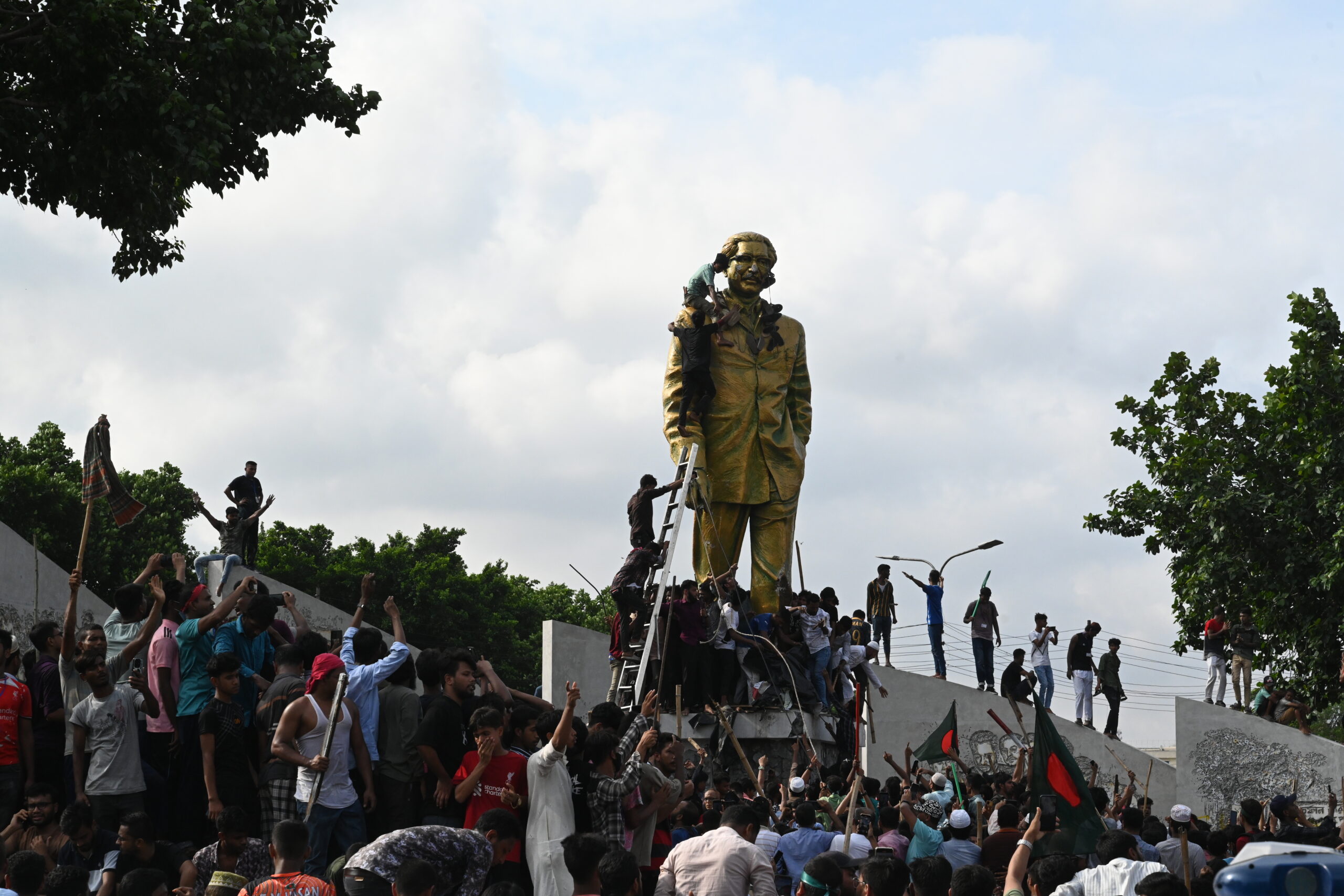
Law Adviser Dr. Asif Nazrul has claimed that the Awami League (AL) possesses fascist characteristics in its DNA. “Not just the July massacre and the logi-baitha massacre on 28 October 2006, but the Awami League was responsible for the deaths of thousands, including members of JSD and the Sarbahara Party after 1971. AL is behind the disappearance of sector commander Major Jalil, and killing of Siraj Sikder. This proves beyond doubt that fascism is rooted in the DNA of the Awami League,” he explained further while speaking at a discussion at Bangla Academy last Thursday. Several other leading individuals attached to the current government also participated in the meeting. Dr. Asif’s “proof beyond doubt” assertion is significant. In the criminal justice system, the concept of “proof beyond a reasonable doubt” stands as the highest standard. This reminds me of many events I have come across about Awami League’s thuggish character. He mentioned some events that occurred after Bangladesh came into existence, but as a history student, I would like to take him further back, beyond Bangladesh’s 1971 independence movement: AL was not born in independent Bangladesh.
I was too young to remember the murder of the Deputy Speaker of the East Pakistan Assembly, Shahed Ali Patwary, by Awami League members of the Assembly, but during my college days, I saw Awami League’s student wing, East Pakistan Chhatra League, known as EPSL, creating terror in campuses, usually with hockey sticks in their hands. In those days, Ayub Khan’s Convention Muslim League supported NSF, which was another thuggish student organization that dominated college and university campuses. The left-oriented East Pakistan Chhatra Union, known as EPSU, used to be a close companion of EPSL in confronting NSF and other student organizations during those days.
Then came the 1969 anti-Ayub movement; it was a massive uprising. Although EPSL and EPSU were at the forefront of the movement, it had combined all opposition political parties, including the traditional Muslim League known as the Council Muslim League, Jamaat-e-Islami (JI), and many other smaller parties, and of course, the AL in the struggle. I used to participate in those demonstrations in my small hometown, but I was not comfortable with all the slogans we were shouting. One of those slogans was: fire, fire – must burn, must burn. The movement was not violent by today’s standards, but they was not peaceful. One interesting phenomenon of anti-Ayub processions was that there were many unknown faces among us, but they managed to become an integral part of the EPSL cadre.
I then witnessed the two years of Yahya’s regime that ended up creating Bangladesh. There is a general perception that the 1970 elections were free and fair, but that is not true. However, both the AL and the regime vehemently defended the perception. Throughout the long campaign period, AL cadres sabotaged opposition rallies and gatherings. The most conspicuous event occurred on January 18, 1970, when JI’s public meeting at the Paltan Maidan in Dhaka was attacked, killing two persons and wounding hundreds. JI chief Sayyid Maududi was scheduled to address the gathering, but AL-supported laborers and students literally invaded the ground. Both the government and the mainstream were complicit in the act. This behavior continued throughout the campaign period.
With the passage of time, AL’s fascist character became even more evident. On Election Day, AL cadres prevented polling agents belonging to non-AL candidates from entering polling stations in many parts of East Pakistan. More violence followed the election itself. Although the government of Pakistan was squarely responsible for the violence that occurred from March 1 onwards, no one can ignore the provocations caused by a section of Bengali hooligans. Non-Bengali personnel in the police and armed forces and their families became easy targets, and many were mercilessly killed in various parts of the province. In many places, non-Bengali civilians known as Biharis also became easy targets of violence. A moribund civil administration almost totally collapsed, and a kind of civil war ensued.
Following the Army’s infamous ‘Operation Searchlight’ on March 25, the civil war turned to the war of independence. One should note here that the war of independence of Bangladesh was very different from the war of independence in Algeria or the struggle for self-determination that we witness today in Palestine. Many Bihari families became victims of ethnic cleansing that started at the beginning of March 1971 and continued throughout the nine-month-long war and for several months following the independence of Bangladesh. One may find an account of such tragic stories in Azmat Ashraf’s Refugee. I am unsure whether Dr. Asif’s audience is aware of the events closely related to AL’s thuggish character that preceded and followed the early period of independence of Bangladesh.
In this connection, I cannot ignore the treatment some Bengali-speaking individuals encountered in post-independence Bangladesh. Among many names, the names of Maulavi Farid Ahmad of Nezami Islam Party and Dhaka University’s vice-chancellor, Professor Syed Sajjad Hussian’s names, strike me the most. Mr. Farid Ahmad, a profound scholar and parliamentarian, was lynched on December 16, 1971. Professor Sajjad’s body was left assuming dead in front of the Gulistan cinema hall a few days later. However, he survived the ordeal to write his Ekattorer Sriti.
AL and its supporters have heavily distorted the history of Bangladesh. I have taught world history at the university level for more than three decades, but I am yet to come across any other history that is as distorted as the history of Bangladesh. I strongly recommend that the current government undertake the task of revising the history curriculum. Recently, the government has banned AL’s student wing, but such action may backfire if the government does not provide enough legitimate reasons for the ban. A revision of the history curriculum that rationally and factually documents the sordid history of the Bangladesh Chatro League (including its precursor, the East Pakistan Chatro League) may provide the perfect historical backdrop and raison d’être for the ban.

